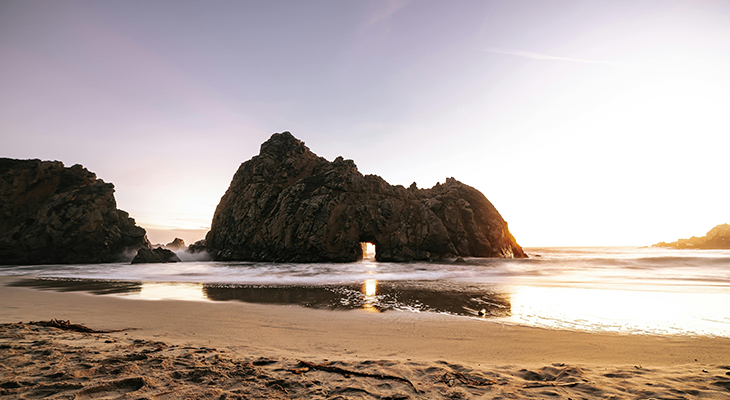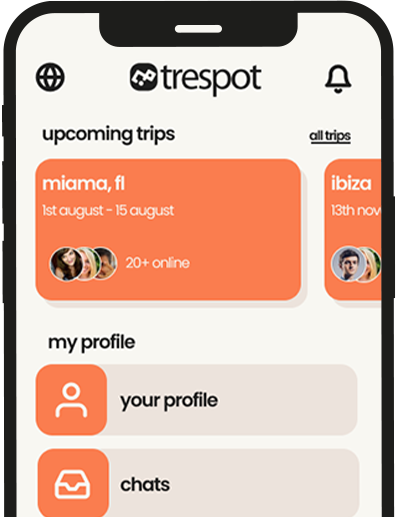Going on a Trip: The Complete Traveler’s Guide
A step-by-step roadmap for every traveler, from first-time explorers to seasoned globetrotters.

Watch a quick visual walkthrough before going on a trip.
Table of Contents
Few things fire the imagination like going on a trip that moment when a pin on an online map turns into a real-world adventure. Yet between the daydream and the departure lurks a maze of decisions: budgeting, booking, packing, safety, sustainability, and more. Whether you’re a backpacker chasing sunsets or a family plotting the perfect vacation, the choices you make before you lock the front door largely determine how rewarding or stressful your journey will be.
This guide distills the best tactics from top travel checklists, finance columnists, veteran bloggers, and government advisories into one actionable playbook. We’ll walk through setting intentions and budgets, researching destinations, booking smart, packing like a pro, and staying safe, connected, and eco-friendly on the road. Expect real-world examples, data-backed tips, and a few insider hacks that typical listicles skip. By the end, you’ll not only feel ready for your next escape you’ll have a reusable framework for every future trip. Let’s dive in!
1. Clarify Your Intentions & Budget
1.1 Why Intent Matters
Before you price flights, ask why you’re going on a trip. Is it a digital-detox trek, a culinary crawl, or a time-boxed family reunion? Defining the core intent guides every downstream choice from destination to daily spend.
1.2 Build a “Fun-First” Budget
- Reverse-engineer costs: Rather than saving “what’s left,” list anticipated expenses (transport, lodging, food, experiences, insurance) and work backward to a monthly savings target.
- Use the 50/30/20 rule (tweaked): Funnel 20% of discretionary spending into a dedicated travel fund.
A recent Economic Times report shows Indian travelers who plan expenses at least six months out reduce trip-related borrowing by 35%.
1.3 Hidden Costs to Factor In
- Foreign transaction fees and dynamic currency conversion.
- Roaming data upgrades (see Section 5).
- Home sitters / pet boarding.
Budgeting for “invisible” costs up front prevents mid-trip credit-card shock.
Pro Tip
Create two budgets: a baseline (must-haves) and a stretch (splurges). If exchange rates swing in your favor, you’re ready to upgrade a hostel to a boutique stay guilt-free.
2. Choose & Research Your Destination
2.1 Narrow the Field
Start with three “dream spots” that fit your intent, then run them through practical filters: seasonal weather, visa ease, safety index, and cost of living. Travel blogger Nina Ragusa recommends plotting options on a simple spreadsheet to reveal trade-offs.
2.2 Deep-Dive Research Framework
| Step | Tool | Key Question |
|---|---|---|
| Safety & advisories | Government sites (e.g., U.S. State Dept.) | Is it safe to be going on a trip there now? |
| Cultural insights | Travel blogs, forums, podcasts | What customs could trip me up? |
| Local transport | Official transit apps, Trespot | How will I move around affordably? |
| Experiences | Search “things to do”, social reels | What makes the destination unique to my intent? |
2.3 Crowdsourced Wisdom
Redditors in travel hack communities suggest reading a full guidebook cover to cover, then fine-tuning schedules in a calendar app to visualize transfer times.
Unique Insight
Create a “mood board itinerary”: collect images, music playlists, and flavors synonymous with your destination. This sensory prep boosts pre-trip motivation and sets clearer priorities than a plain checklist.
3. Book Smart: Transport & Accommodation
3.1 Timing Your Purchases
- Flights: For international routes, 6–8 weeks out usually hits the sweet spot.
- Accommodation: Lock cancellable rooms early if traveling in peak season; refine later as deals emerge.
Travel experts also advise booking train seat reservations ahead for popular European routes to avoid last-minute surcharges.
3.2 Layered Booking Strategy
- Primary Booking: Non-negotiables (arrival flight, first two nights).
- Secondary Booking: Flexible segments (inter-city transport, tours).
- Tertiary Booking: Day-of decisions (restaurants, shows).
This staggered method preserves spontaneity while protecting critical legs of the journey.
3.3 Accommodation Hacks
- Use “price-watch” features on booking platforms.
- Check cancellation policies some destinations enforce hefty tourism fees payable on arrival.
- For groups, vacation rentals often beat hotels on cost per head; for solos, hostels or capsule hotels offer built-in social circles.
A real-world couple lost hundreds by pre-paying a weeks-long stay in a city they later disliked flexible booking could have saved them.
Unique Insight
Cross-reference your lodging address with local public-transport maps before you commit. A cheap room far from transit eats savings in ride-hails.
4. Pack & Prep: The Ultimate Checklist
4.1 The 3-Layer Packing Method
- Core Layer: Passport, wallet, medications, chargers items that cannot be replaced.
- Comfort Layer: Climate-appropriate clothing (count outfits, not items).
- Curiosity Layer: Gear that enhances your intent (DSLR for photography trips, snorkel for island hops).
Some seasoned travelers swear by setting a “real budget” and mapping outfits to days to avoid over-packing.
4.2 Tech & Tools
- Universal adapter with surge protection.
- E-Sim or portable Wi-Fi hotspot.
- Cloud backup of documents (passport, visa, insurance).
4.3 Last-Minute Home Lockdown
Use a pre-departure checklist: water plants, switch off appliances, forward mail, secure windows, empty perishables, schedule bill payments. Stick it to your door for a stress-free exit.
Unique Insight
Pack a thin roll of painter’s tape. It weighs nothing and fixes everything from selfie-stick mounts to hotel-curtain gaps (for that sunrise sleep-in).
5. On the Road: Safety, Connectivity & Sustainability
5.1 Stay Safe & Healthy
- Enroll in your home country’s embassy alert program.
- Download offline maps with emergency hospital locations.
- Review local health advisories and vaccine requirements.
Travelers who pre-load destination advisories can respond faster to disruptions.
5.2 Connectivity Without Bill Shock
Check if your carrier offers short-term international plans; alternatively, buy a local e-sim. The savings often pay for a meal a day, and stable data supports navigation, translation, and digital payments while going on a trip.
5.3 Tread Lightly: Sustainable Choices
- Opt for direct flights when possible take-off and landing create the most emissions.
- Choose accommodations with visible eco-certifications.
- Carry a collapsible water bottle and wooden cutlery set to cut single-use plastics.
Guided group trips with aggregated logistics can slash individual carbon footprints compared with fragmented DIY itineraries.
Unique Insight
Run a “digital detox hour” each day stash phones, soak in surroundings. Travelers who practice this often report higher memory recall of experiences.
Quick Takeaways
- Start every plan by clarifying why you’re going on a trip purpose drives all decisions.
- A two-tier budget (baseline & stretch) keeps spending clear and flexible.
- Research beyond blogs: combine advisories, forums, and real-time social content.
- Layer bookings secure essentials early, leave room for serendipity.
- Use the 3-Layer Packing Method to avoid luggage fees and forgotten essentials.
- Prioritize safety alerts, e-sims, and eco-friendly habits to travel smarter and greener.
Conclusion
Going on a trip is equal parts art and science. The art lies in the stories you’ll collect and the serendipity you’ll embrace; the science sits in meticulous prep that frees you to be spontaneous. By aligning intent with budget, vetting destinations thoroughly, booking with flexibility, packing strategically, and traveling safely and sustainably, you build a framework that works for weekend road trips and round-the-world odysseys alike.
So, pick your next pin on the map and put this guide into action. Let your planning be purposeful, your journey mindful, and your return richer in memories and ready to start planning again. Happy travels!
FAQs
Q1. What’s the best time frame for booking flights when going on a trip abroad?
Most data aggregators show 6–8 weeks before departure strikes the balance between price and availability for international routes earlier for peak seasons.
Q2. How do I keep my “going on a trip” budget from ballooning once I’m on the road?
Use a daily spend cap app; allocate 10% wiggle room for unplanned experiences to avoid anxiety and overshoot.
Q3. Is travel insurance really necessary for short regional trips?
Yes medical evacuations or trip interruptions can cost thousands. Even short trips benefit from low-cost coverage for peace of mind.
Q4. What’s one packing item people overlook when going on a trip?
A multi‑USB GaN charger. It powers phones, tablets, cameras from one outlet crucial in rooms with limited sockets.
Q5. How can I find eco-friendly accommodations?
Look for certifications like Green Key, EarthCheck, or GSTC; verify via reviews that actions go beyond simple towel-reuse signs.
We’d Love Your Feedback
Planning on going on a trip soon? Which tip will you try first, or what hack did we miss? Drop a comment below, share this guide with a fellow traveler, and help the community grow. What’s your next destination and why did you choose it?
References
- Business Insider – Eight Travel Mistakes That Cost Time and Money
- The Economic Times – Planning Tips to Go on Vacation Without Taking Loan
- Rick Steves Europe – Before You Go Checklist
- Where in the World is Nina – How to Plan a Trip
- U.S. Department of State – International Traveler’s Checklist
- Intrepid Travel – Last-Minute Adventures Guide


